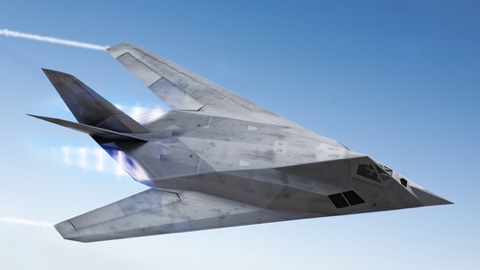
Canada has invested $2.7M ($2.1M USD) into developing quantum radar – a new technology that would greatly improve the detection of stealth aircraft. Quantum radar can theoretically detect objects with a greater level of accuracy than conventional radar. Conventional radar uses microwave signals that are expected to bounce back after hitting an object in order to detect its presence. Stealth fighter jets and bombers are designed to have lots of angles, so that when a microwave photon bounces towards the body of the aircraft, the photons bounce off in different directions. This means that fewer photons return to the detector, which makes the object seem “invisible” on conventional radar detectors.
Quantum radar makes use of quantum illumination – the process of isolating pairs of entangled photons. Entangled photons are a pair of photons that are connected, and even if the photons are separated by a great distance actions performed on one photon continue to affect the other. One of the entangled photons gets fired out. It bounces off the hidden object, and because it is entangled, the detector can trace where it went to, and keep firing more photons until a picture is built up of where the object is in the atmosphere.
Roger McDermott, a visiting senior research fellow at the department of war studies at King’s College London, said that there were currently no known electronic warfare technologies capable of unmasking stealth aircraft. Quantum radar could become a viable form of electronic warfare, he said, but so far, “there is little evidence that it has advanced much beyond the laboratory” in any country. It needs further research and development, as well as field testing before it reaches a realistic procurement option.”
